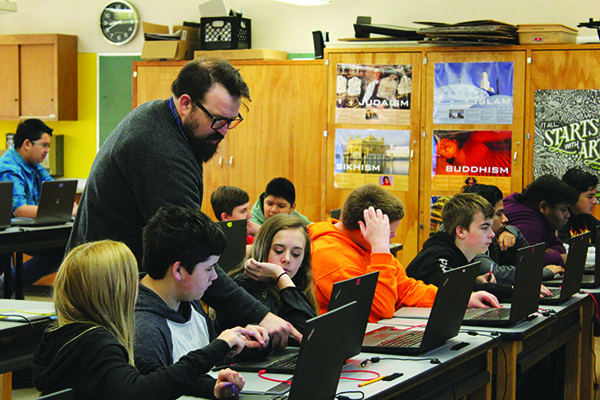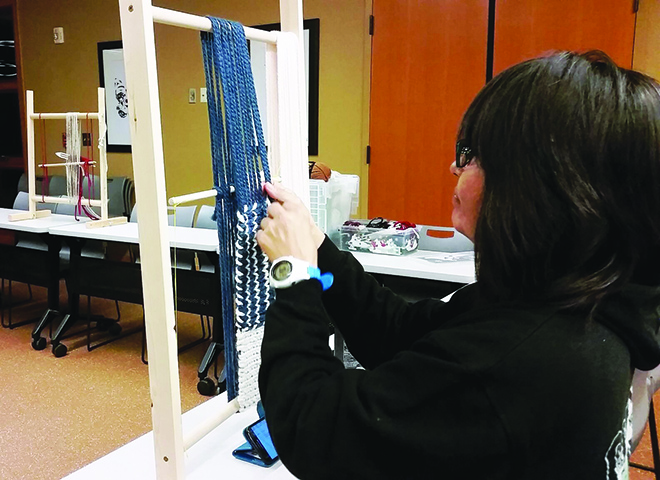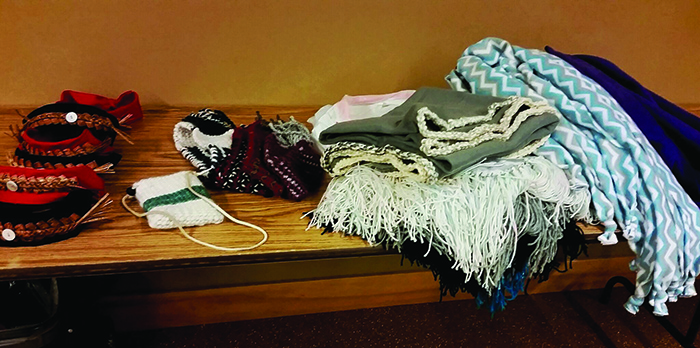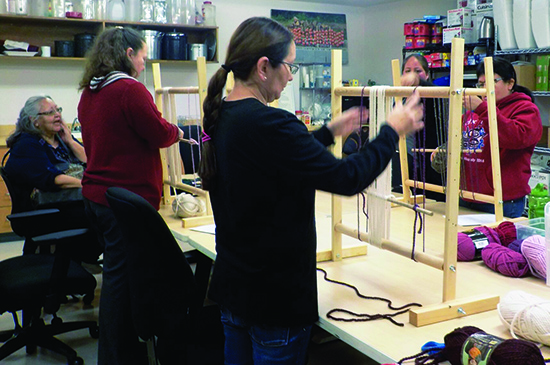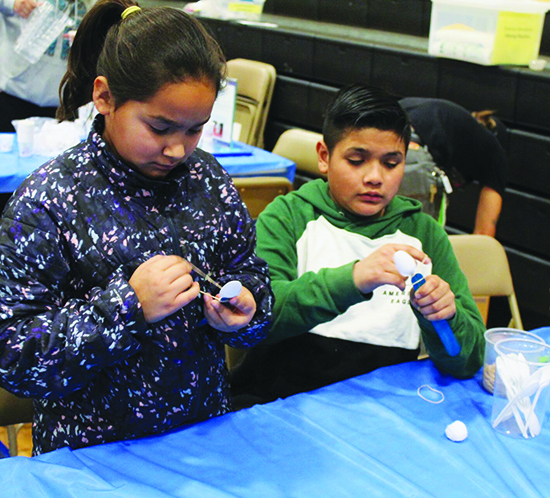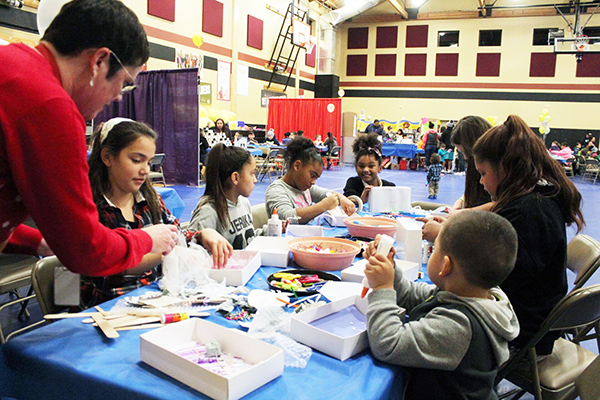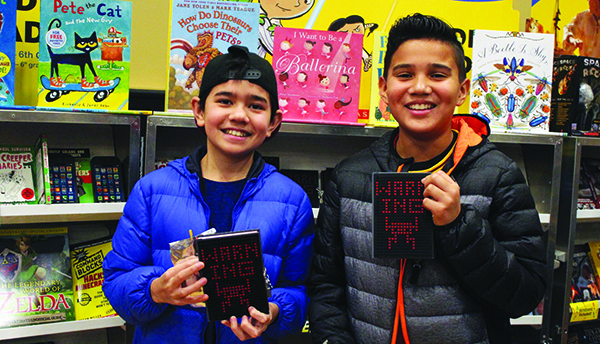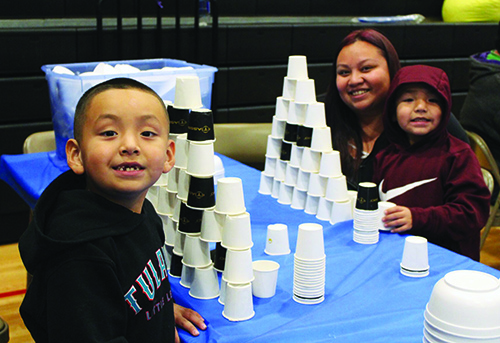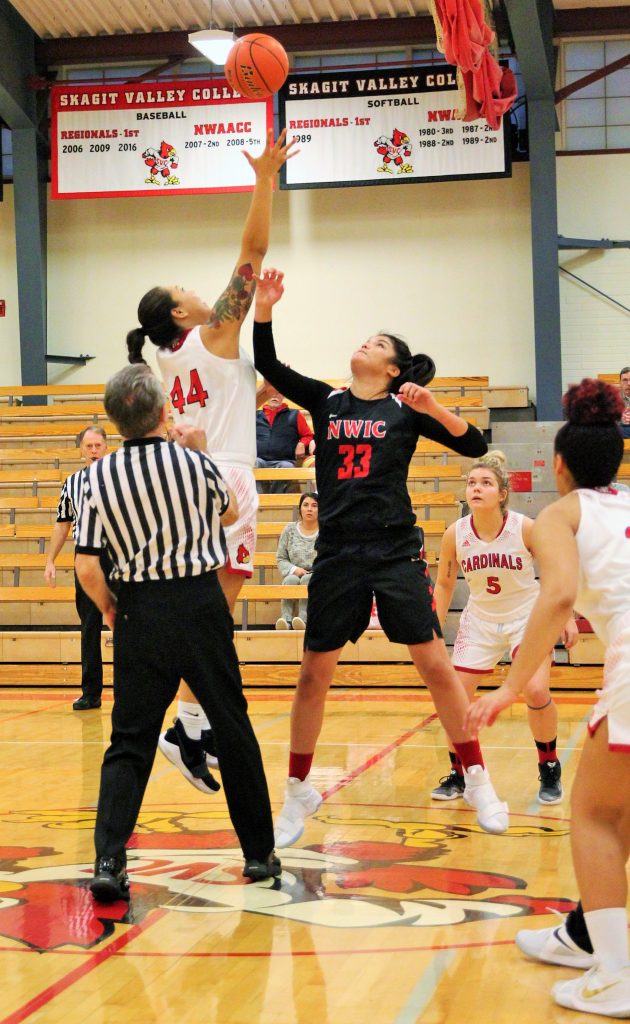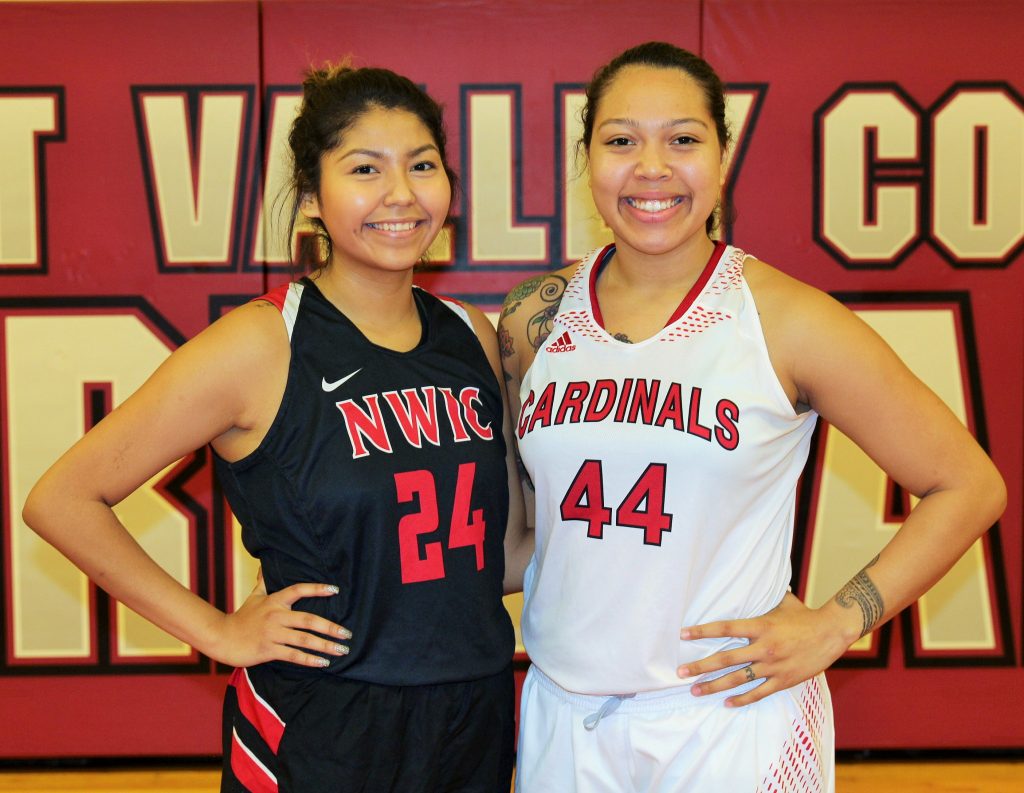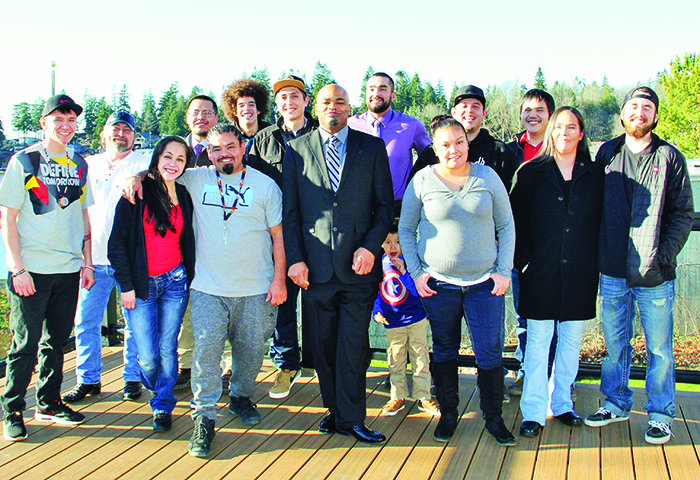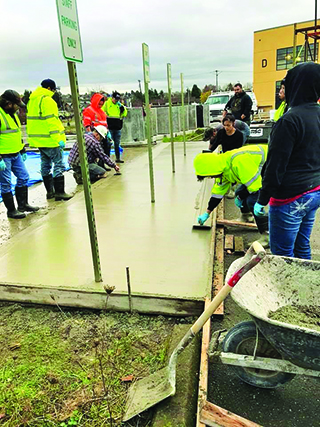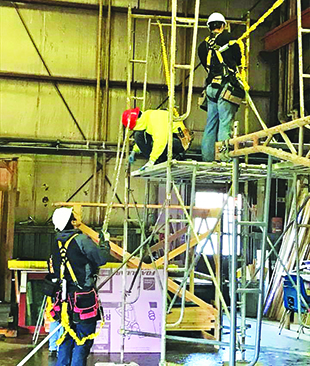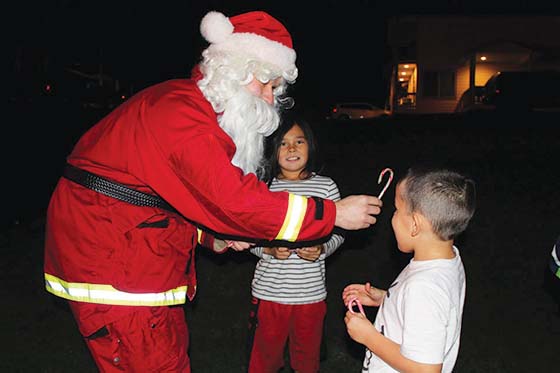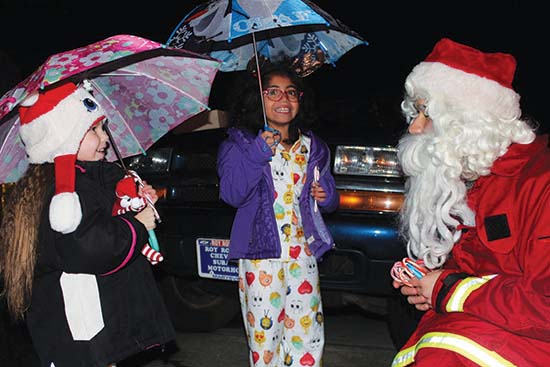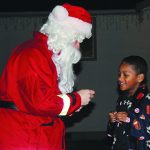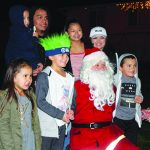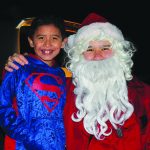Category: News
Marysville School District February Levies
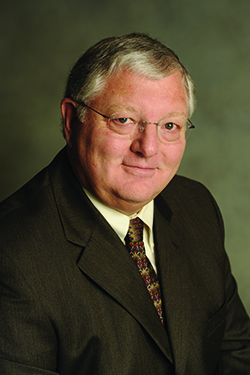
By Tom Albright, President, Marysville School District Board of Directors
On Feb. 13, the Marysville and Tulalip community will have an opportunity to vote on two replacement levies that will maintain support for the educational programs and services students currently receive as well as provide for the improvement and maintenance of the facilities where they learn and grow. The four-year Educational Programs and Operations Levy and the Technology and Capital Projects Levy were approved by voters in 2014 and will expire at the end of 2018. February’s ballot will include a request to renew these levies and ensure local students continue to receive basic educational resources.
The Educational Programs and Operations Levy will provide funding to ensure students have enough classroom teachers and instructional aides to reduce and maintain smaller class sizes. It also provides resources to employ nurses, counselors, librarians and support staff to reinforce the health and safety of students and positive school culture. The Educational Programs and Operations Levy will also provide programs for students with special needs, and will support the arts, music, athletics, and extra-curricular programs across the district. The total request per $1,000 of assessed home value for Marysville residents is $2.97, which is 70 cents less than current levels. However, tribal members residing on reservation land are exempt from levy taxation.
The Technology and Capital Projects Levy will ensure students receive the same level of service in improved learning environments. Access to technology is a basic right in the Marysville School District. Approval of the levy will continue to provide students in grades 6 through 12 with Chromebooks for use inside and outside of the classroom, and all students from kindergarten through grade 5 will continue to have ample access to technology in the classroom. This levy also provides funding to ensure school staff receives training on best practices for incorporating technology into curriculum so all students are getting the most out of 21st Century resources.
Additionally, the levy will continue to provide students, families and the community with 24/7 Wi-Fi access across all buildings, as well as routers, power sources, and wiring to maintain capacity and improve access and speeds.
The Marysville School District also understands the importance of maintaining school buildings and facilities, and will continue to follow through on the Long-Term Master Facilities Plan, which prioritizes the most critical facility retrofits and replacements needed over the next five years. This includes roof and gutter replacements, fire system upgrades, door and hardware replacements, boiler replacements and heating improvements, floor replacements, electrical retrofits such as lighting, outlets, and intercoms, and siding replacements. A complete list of projects across the district can be found on the Long-term Master Facilities Plan at http://bit.ly/MasterFacilitiesPlan.
The four-year renewal Technology and Capital Projects Levy is projected to cost 67 cents per $1,000 of assessed home value for Marysville residents and will be reduced each year.
In total, the two levies amount to $3.64 per thousand of assessed home values – 42 cents less than current levels. As a reminder, tribal members residing on reservation land are exempt from this taxation.
The Marysville School District Board of Directors is thankful for the support provided by the community over the past four years and looks forward to continuing these efforts on behalf of students and families through a renewal of the Educational Programs and Operations Levy and the Technology and Capital Projects Levy.
Weekly Wednesday Weaving Workshops at Hibulb
By Kalvin Valdillez, Tulalip News
The Hibulb Cultural Center and Museum hosts a lineup of classes that teach the Tulalip and Marysville communities about the traditional lifeways of the northwest Indigenous Peoples. Such classes include drum making, carving, beading, traditional flute demonstrations as well as storytelling and poetry nights. A series of classes that regularly attracts newcomers are the Weaving Gathering Workshops where participants learn how to weave an assortment of items including cedar baskets, loom blankets and regalia such as headbands, hats, neckties and purses.
The workshops are taught in an open-forum style class setting that encourages attendees to work on personal projects and visit while mastering the art of weaving. In preparation for the annual Treaty Days Commemoration, a group of dedicated weavers have been working persistently, meeting each week since December, to create headbands to gift to the speakers as well as the floor and table managers during the ceremony.
All ages are welcome to attend the weekly weaving sessions. The museum also invites weavers of any skill levels to participate during the gatherings. Cedar kits are available for purchase to help beginners get started.
“They’ll show anyone interested in learning, especially little kids. They’ll make little roses and small baskets with them,” says Hibulb Cultural Center Education Curator and Tulalip Weaver, Lena Jones. “It’s a place where people have the room and space to create whatever they want.”
The workshops are held every Wednesday from 5:00 p.m. to 8:30 p.m. in the Hibulb Cultural Center Classrooms. For additional information please contact the museum at (360) 716-2600.
Early Learning Academy Hosts Executive Function seminar at Parent Café
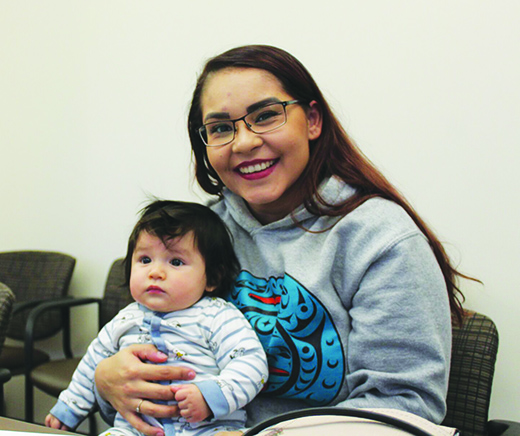
By Kalvin Valdillez, Tulalip News
Recent studies show that executive function skills begin to develop in children between the ages of birth to five. Although executive function skills aren’t fully developed until the age of twenty-five, the foundation for these skills are strongest when trained at a young age.
You might be wondering, what are executive function skills? By definition they are a set of cognitive processes that are necessary for cognitive control of behavior, selecting and successfully monitoring behaviors that facilitate the attainment of chosen goals. In other words, they are skills we use day-to-day to manage our lives and accomplish our goals. Executive function skills include impulse control, working memory, organization, task initiation, metacognition, stress tolerance, time management, planning/prioritization, emotional control, response inhibition and sustained attention.
The Betty J. Taylor Early Learning Academy hosted a two-day workshop informing parents about executive function skills on January 10 and 11. During the Parent Café, attendees were treated to snacks and beverages while viewing videos showing studies of executive function skills in early childhood as well as a presentation by ECEAP Manager Stephanie Pitman.
“I wanted to give a presentation on executive function skills because so often parents are concerned about their kiddos not knowing the ABC’s, their colors or shapes. But really for true life success, they need to have impulse control, working memory and mental flexibility. That is the basis for all other learning in the future,” says Stephanie.
During the training the parents openly talked with one another about these skills and how they pertained to their children, asking and offering parent-to-parent advice. At the end of the seminar the parents took a quiz in which they learned a little bit about their personal executive function skills strengths and weaknesses and discussed how to improve them.
“This class taught me that it’s the little things that are taught over time. I think it’s important because anything you can do to help better your children is great,” expressed Early Learning Academy Parent, Mary Cameron Perillo.
“It’s more engrained when you can get them [during ages] birth to five,” states Stephanie. “Executive function is what they’re going to have to learn in life. I may not need to know my colors or algebra in my daily life but I am going to have to know how to get along with others. I am going to have to know how to exercise impulse control and how to deal with stress. Adults use this every day, that’s the skills we need for lifelong success.”
For more information, please contact the Betty J. Early Learning Academy at (360) 716-4250.
Tulalip students engage in hands-on, experimental learning
By Kalvin Valdillez, Tulalip News
Excitement was hard to contain at the Greg Williams Court on the night of December 20, 2017. Though it was merely five days until Christmas, the holiday spirit appeared to take a backseat as the youth of the Tulalip community participated in a fun, educational evening at the first Family STEAM and Literacy Night, hosted by Tulalip Youth Services.
STEAM, an acronym for Science, Technology, Engineering Arts and Mathematics is similar to the popular learning curriculum, STEM, implementing the arts as an additional area of study. Variations of the STEAM program are currently being used in schools across the nation; however, local schools such as Quil Ceda Tulalip Elementary and Tulalip Heritage High School continue to follow the STEM program for the time being. By bringing the STEAM experience to Tulalip, families participated in creative, experimental activities and the kids had a blast while doing so.
“STEM was created to engage more students in learning and gaining hands-on skills,” explains, Jessica Bustad, Tulalip Youth Services Education Coordinator. “I feel that adding arts into what was originally STEM is important. Most of what we do in school and also in the workforce requires creativity. Art can be found in each of the Science, Technology, Engineering and Mathematics fields. In my opinion, to add it, to give it more power and recognition helps us all keep the creativity we have inside. Each child and adult learns differently and the larger variety of opportunities we offer, the better.”
The event kept the future leaders busy with several interactive activity stations such as an assembly line, where the kids took apart and reassembled ballpoint pens. Another popular activity was the cup tower station. A small group formed amongst the youth who worked together to make an extreme tower, so tall the kids were barely visible behind their structure. Laughter and surprised expressions such as ‘woah’ and the occasional ‘wait, how’d you do that?’ were heard from the youngsters as they experimented together, eagerly bouncing from station to station. And drawing the largest crowd was a hands-on art project presented by the Imagine Children’s Museum in Everett.
“Today we are creating a nature-scape,” explains Jennifer of the Creative Arts Department at the Imagine Children’s Museum. “We use recycled materials and other items found in nature to create a scene, like a diorama, found in nature and today we’re focusing on the winter season.”
The children used cotton balls and various items to construct snowy sceneries, which they viewed under a black light to give their diorama a more dramatic, chilling winter look.
The first fifty kids who arrived at the event received free beanbag chairs. The Scholastic book fair was part of the event and Youth Services gave everybody in attendance a free book.
“We want to encourage reading and learning together as a family at home,” says Jessica. “We also want to show that learning can be fun, that there’s different ways to learn and also that studying doesn’t always have to be so stressful. We have to empower our children to be explorers of their own interests. It is our duty to encourage them to find and research all of the possibilities for their future.”
The STEAM and Literacy Night was a success. Tulalip parents and kids are already inquiring about the follow-up to the action-packed, hands-on learning event, to which Youth Services promises there will many more during the new year.
For more information, please contact Youth Services at (360) 716-4909.
She Got Game: Women Tribal Members Featured in College Hoops Matchup
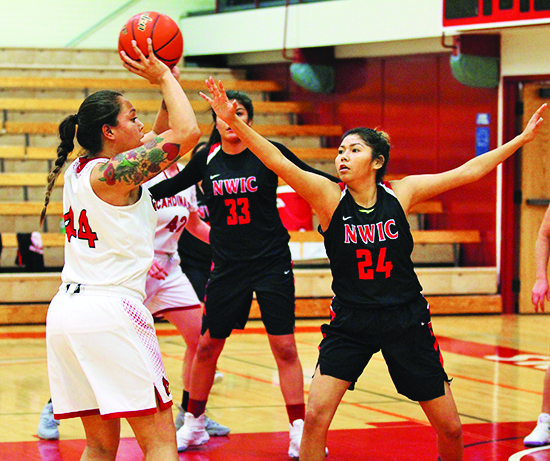
By Micheal Rios, Tulalip News
They’ve grown up together on the Tulalip Reservation playing more games of rez ball than can be remembered. Years and years of dribbling, rebounding, and hearing the net swish has created countless memories on the hardwood, but an all-new memory was created for Tulalip tribal members Adiya Jones and Kanoa Enick when they matched up for the first time as collegiate adversaries.
In her second year playing for Skagit Valley Community College, Adiya has stepped up and taken the reigns as the team’s unquestioned leader. She is the primary playmaker on offense while also anchoring the team’s defense.
“Adiya is our best player and there’s a reason why. She has a high basketball I.Q., she’s so smooth with the ball, has a great shooting touch, and she’s a willing passer; making her a tremendous asset to our team,” beams Steve Epperson, Skagit’s Athletic Director and Women’s Basketball Coach. “Over the last few games she’s rebounded the heck out of the basketball as well.
“I’m really proud of her as a student, too, because she’s doing really well in school and making great progress towards her degree.”
Meanwhile, Kanoa recently decided to test her medal at Northwest Indian College (NWIC) by enrolling in Winter quarter. Her appetite for getting buckets still strong, she walked onto the women’s basketball team and is quickly showing promise.
“She adds another dimension to our team. Kanoa is a good hustle player, she’s very long and is able to contest shots on the perimeter,” states Matthew Santa Cruz, NWIC’s Women’s Basketball Coach. “She’s also able to take it to the hole, get fouled, and make her free-throws. That’s a real asset in this game.”
And so the stage was set for the two home-grown college athletes to face-off for the first-time ever.
The historical moment took place at the Lummi High School gym, the home court for NWIC, on Friday, December 5. Adiya shined while leading her team with 24-points, but it was Kanoa’s NWIC team taking the W in a 64-61 nail biter.
The following day, the two team’s played once again, this time in Mt. Vernon, giving Adiya’s Skagit squad the opportunity for payback. There were several Tulalip fans in the crowd who journeyed to watch the matchup. Skagit came away with a convincing 66-35 W the second time around, giving both Tulalip women a victory over the other.
Following their second matchup in as many days, Adiya and Kanoa reflected on this new experience.
“I was nervous and excited when I realized we were about to play against each other,” said Kanoa. “It doesn’t come off like we know each other on the court because we’re both so focused on the game. It was really cool to see Tulalips in the stands rooting for us.”
“It was definitely fun. It hit me when I was warming up for our first game; I was thinking ‘this is so weird I’m about to play Kanoa’,” smiled Adiya. “For the younger generation at home in Tulalip, I hope they see this and realize they can attend college and play ball, too. Get outside your comfort zone because, honestly, once you try it you’ll realize how exciting new opportunities are.”
Native Homeownership, The Guide to Buying a Home
Training for a better tomorrow
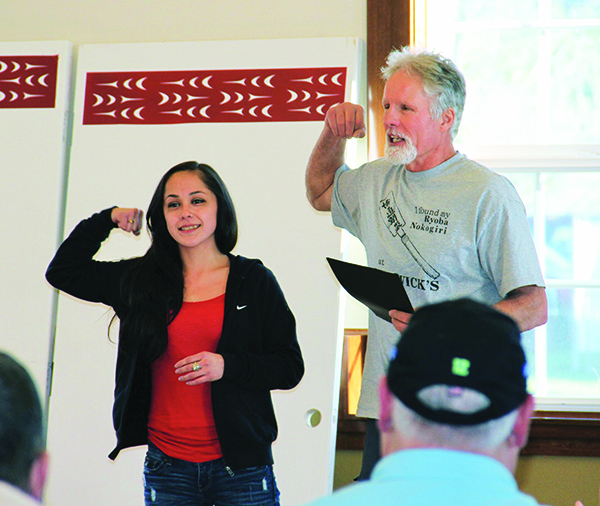
By Micheal Rios, Tulalip News
On Wednesday, December 20, fourteen Native students were honored at the Dining Hall with a graduation banquet for their commitment to training for a better tomorrow. The fourteen students, five of whom are Tulalip tribal members, were the latest cohort to complete an intensive, fourteen-week pre-apprenticeship construction trades program offered by the TERO Vocational Training Center (TVTC).
As far as we know, the program, which is managed by the Tulalip TERO department, is the first and only state and nationally recognized Native American pre-apprenticeship program in the country. The program is accredited through South Seattle Community College and Renton Technical College, while all the in-class, hands-on curriculum has been formally approved by the Washington State Apprentice and Training Council.
The fifteen-week program provides curriculum that teaches a variety of core construction skills that can last a lifetime. Upon completion, the graduate’s dedication to a better future is rewarded with a wide-range of new employment opportunities now available to each graduate as they navigate the construction trades career path. In addition, students are trained and awarded certifications in flagging, first aid/CPR, and OSHA 10-hour safety training. Graduates have also received certification on three pieces of lift equipment, specifically the scissor lift, boom lift, and industrial fork lift. TVTC students graduate trained and ready to safely and productively enter the construction work environment.
“This TERO program is an amazing opportunity for any Native American, regardless of which tribe you’re from,” says Tulalip tribal member and now TVTC graduate, Brando Jones. “I was living in Tacoma when I first learned of this class. After meeting with Lynne and Robert from Tulalip TERO I knew this class was the best chance for me to reconnect with Tulalip, while at the same time building a foundation for a better future. Now that I’ve graduated, my goal is to use this experience as a stepping stone towards success. I’m really going to miss the teachers and students. To my fellow graduates I say this, ‘We have the tools to build and keys to unlock doors, so let’s get it!’”
The TVTC pre-apprenticeship program is a unique, nationally known model that supports tribal members from sovereign nations across the United States. The program is not dependent on tribal hard dollars. In fact, zero hard dollars are used to fund it. Instead, due to the dedication and commitment of so many individuals the TVTC program continues to grow and gain more recognition while being funded by the graciousness of the Tulalip Charitable Fund, W.K. Kellogg Foundation, DOT’s Ladders of Opportunity Grant, and the Washington State Department of Transportation (WSDOT) Pass Grant.
This Fall session gave TVTC students plenty of opportunities to showcase their newly acquired construction-based skill set with a series of projects. Community projects included a two-day demo and refurbishing of the Hibulb Cultural Center’s fence, constructing a presentation booth for Hibulb, and making a concrete sidewalk at the apprenticeship training headquarters in Seattle.
“This particular group of students was a very together, cohesive unit,” describes instructor Mark Newland. “They looked after one another real well and were always willing to help each other out. When it came to the culminating project, building three tiny houses, the students showed a lot of passion in their work and did an awesome job.”
Under the supervision of instructors Mark Newland and Billy Burchett, the students constructed three tiny houses for their final class project. These houses, which are approximately 120-square-feet in size, are being donated to homeless families located at a yet to be named, newly created homeless village in Seattle. The insulated houses will be a major upgrade for their soon-to-be residents as they offer electricity, heat, a much safer environment and, most importantly, a measure of stability.
“TVTC works with Low Income Housing Institute (LIHI). To date we have built 18 tiny Homes for this organization, which donates all supplies and materials required. This has saved TVTC thousands of dollars as these houses are used for training purposes, and lumber that was previously purchased for class is no longer needed,” explains TERO Coordinator, Lynne Bansemer.
“This most recent TVTC session we added a specialty course – a forty-hour scaffolding course – that was developed by the Carpenters Union Training division,” adds Lynne. “TVTC is excited to bring this opportunity to our students as scaffolding is used across many trades and this allows more employment opportunities for our students.”
Since the Fall of 2013, when TERO took over the program, 141 students have graduated the pre-apprenticeship program. Of those 141 graduates, 57 have been Tulalip Tribal members, and 17 have either been Tulalip spouses or parents. That’s 74 graduates from Tulalip and 67 fellow Native Americans from all over the region who have opted to train for a better tomorrow by completing the construction training program.
TVTC has seen an increasing number of persons who balance a full-time job while attending the training program. This term they had several students who came to training school every day who held full-time jobs by working swing or graveyard shifts. These students wanted more opportunities in their future and were willing to put in the dedication and sacrifice necessary in order to open more doors.
For more information on Tulalip TERO’s TVTC program or to inquire about admission into the next pre-apprenticeship opportunity, please contact Lynne Bansemer, TERO Coordinator, at 360-716-4746 or visit TVTC.TulalipTERO.com
All Breed Equine Rez-Q Must Find New Home
Location of over a decade to be sold in the spring
The Marysville non-profit equine rescue that has been a haven to unwanted and abused horses for nearly 20 years must move by the spring because its lease will not be renewed and the property will be put up for sale.
“This is a big deal with 23 horses and everything that goes with that,” said Dale Squeglia, All Breed’s executive director. “Finding a new home is not like looking in the classified ads for apartments!”
While spring is a few months away, the complication of the move has led Squeglia and her volunteers to jump into action to deal with the move. At this point, two options drive their planning:
Option One – hope that someone steps forward and donates property already set up for horses, such as a riding stable or horse farm.
“This would be the simplest option and would allow us to start with a good foundation and use funds we raise to make any improvements that are needed,” Squeglia said. “If it was in the general vicinity, we could continue to serve the community that we have been a part of for nearly 20 years, as one of the few remaining equine rescues left in Snohomish County.”
Option Two – develop 62 acres of land donated to All Breed by a generous supporter. This is undeveloped land with only an interior road, a well and power, the latter two Squeglia personally funded. Everything else would have to be constructed, including fences, barns, volunteer staff housing, etc.
“Option Two was on a slow track until we found out about losing our current location,” she said. “Now, pending another surprise – like Option One – we feel our backs are against the proverbial wall and we need to seriously speed up development of this land.”
Squeglia said she and her volunteers are conflicted by the thought of leaving the Snohomish County community, although All Breed has donors from all over Washington state and even out of the state.
“But we do need to move forward for the good of our horses, ponies, and donkeys,” she said.
At this point, a rough estimate of the cost to develop the property based on the rescue’s current equine population is $150,000. This would buy a 4-6 stall barn, 20 fenced paddocks with enclosed stalls, a hay storage structure, a garage/shop building, and a mobile home for volunteer staff. The size of the property would allow for future expansion on an as needed basis.
Squeglia issued a thanks to all who have contributed to All Breed in the past.
“We hope you will be willing to help us in the future as we embark on the process of pursuing one of these two options for a new home, where our abused, neglected, and unwanted horses can live out their days with love and protection from our unpaid staff and volunteers.
“With help from our donors, we know there is a solution on the horizon and that we will be able to continue to care for these beautiful creatures that have given us so much and expected so little in return,” she said.
Donations may be made to All Breed Equine Rez-Q, P.O. Box 442, Snohomish, WA 98291, or via All Breed’s website at allbreedhorserescue.com. All Breed Equine Rez-Q is a 501 (c) 3 non-profit charitable organization
Santa joins firefighters in visiting children and collecting donations
By Kalvin Valdillez, Tulalip News
“HO! HO! HO! Merry Christmas!” rang throughout the neighborhoods of the Tulalip reservation during the weekend of December 15-17. The loud holiday expressions were from none other than Santa Clause himself, as he walked the streets of the community accompanied by the Tulalip Bay Fire Department. Every year, Santa joins the firefighters to hand out candy canes to the children, while the Fire Department collects canned foods and cash from community members who are kind enough to donate to the less fortunate during the holidays.
The yearly occurrence is known as the Tulalip Bay Fire Department Annual Santa Run and is remarkably popular within the community. Many children anxiously wait for the Christmas-decorated firetruck to pull up on their street, because they know that means Santa is near. Equally shocked and excited, the children enthusiastically greet Saint Nick to let him know what’s at the top of their Christmas list.
Santa Run is a three-day event in which Tulalip Bay Fire visits several neighborhoods on the reservation. All food and money collected by the fire department is donated to the Tulalip Food Bank located at the red church. This year’s donations totaled over 1,000 pounds of non-perishable food items as well as over six hundred dollars.
“Not everybody has food to put on the table during the holiday season,” explains Tulalip Bay Volunteer Firefighter and Santa Run Coordinator, Patrick Dinneen. “The food that we bring in, everything goes straight to the red church the day after we’re done. It’s a huge deal just to get our faces out in the community because on people’s worst days, they can call on us to make it better. We want to be familiar with our community we want people to know who we are and that we’re here for them.”

